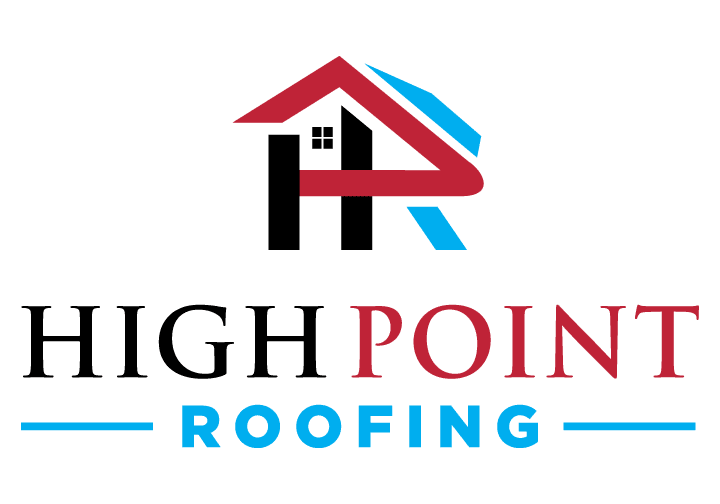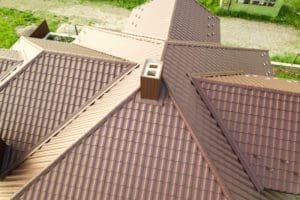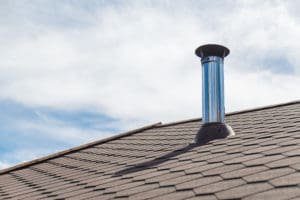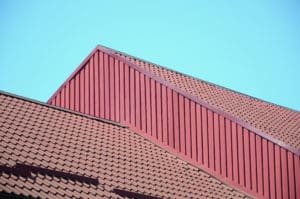Winter brings its own unique set of challenges, especially when it comes to maintaining your roof. Neglecting your roof can lead to serious problems that are often both costly and inconvenient. In this article, we will explore essential roof repair tips, including preventive measures, important inspections, and common winter roof problems to help you prepare your home for winter.
Understanding the Importance of Winter Roof Maintenance
As the temperature drops and snow begins to fall, your roof faces significant stress. Understanding the importance of winter roof maintenance can help you save money and avoid disasters. Regular maintenance helps extend the lifespan of your roof and ensures it remains functional during the cold months.
The Impact of Winter Weather on Your Roof
Winter weather can have various effects on your roof, including added weight from snow accumulation and the risk of ice dams forming. When snow melts during the day and refreezes at night, it can create a cycle of recurring damage. Additionally, strong winter winds can dislodge shingles and expose your roof to leaks.
Moreover, the lower temperatures can exacerbate existing issues. For instance, minor cracks can expand, creating significant leak points. Therefore, proactive measures are vital for safeguarding your property.
Why Regular Roof Maintenance is Crucial
Regular roof maintenance is not just a recommendation; it’s a necessity. By conducting routine checks, homeowners can detect issues early, preventing larger problems from arising. Regular maintenance is particularly essential before the winter months, as it helps catch potential issues that could worsen in cold conditions.
Additionally, maintaining your roof can improve energy efficiency by ensuring adequate insulation and ventilation. A well-maintained roof reduces the workload on heating systems, which can prevent hefty energy bills during the winter.
Furthermore, investing in winter roof maintenance can enhance the overall safety of your home. A compromised roof can lead to leaks, which may cause water damage to your interior, mold growth, and even structural issues over time. By addressing minor repairs before winter sets in, you can avoid the stress and financial burden of emergency repairs when the weather is at its worst. Regular inspections not only help in identifying wear and tear but also provide peace of mind, knowing that your home is protected against the harsh elements.
It’s also worth noting that many roofing materials have specific maintenance requirements that can vary by season. For instance, metal roofs may require different care compared to asphalt shingles. Understanding these nuances can help homeowners tailor their maintenance efforts effectively. Engaging a professional roofing contractor for a thorough inspection can provide insights into the unique needs of your roof, ensuring that it stands strong against the winter’s challenges.
Identifying Common Winter Roof Problems

Identifying common winter roof problems empowers homeowners to take immediate action. Understanding these problems can help mitigate damage and costly repairs later. Let’s look at two significant issues that homeowners should be aware of.
Ice Dams and Icicles: A Silent Threat
Ice dams form when melting snow on the roof refreezes at the edges, creating a barrier that prevents proper drainage. This situation can lead to water backing up under shingles and, ultimately, into your home. While icicles may look beautiful hanging from your eaves, they are often indicators of ice dam formation.
Preventing ice dams requires adequate insulation and ventilation in your attic, allowing warm air to escape and reducing snow melting on the roof. It’s essential to ensure your roof is prepared for winter weather, as ice dams can lead to costly repairs inside your home. Regularly checking your attic for proper insulation and sealing any gaps can significantly reduce the risk of ice dams forming. Additionally, installing heated cables along the roof’s edge can provide an extra layer of protection, ensuring that melting snow drains away rather than refreezing.
Snow Load and Its Potential Risks
Heavy snow accumulation can pose significant risks to your roof. Most roofs are designed to handle a certain snow load, but excessive snow can lead to structural damage. A roof that cannot support the weight may sag or, in extreme cases, collapse.
Homeowners should routinely remove snow from their roofs, especially after heavy snowfall. Using a roof rake can minimize the risk of harming the shingles while clearing off excess snow. Also, be cautious with snow removal to avoid injuries or further damage to your roof. It’s advisable to clear snow in layers rather than all at once, as this can help prevent sudden shifts in weight that might stress the roof structure. Furthermore, if you notice any signs of sagging or if your roof has a flat design, it may be worth consulting a professional to assess the situation and recommend appropriate measures to ensure your home remains safe and secure throughout the winter months.
Pre-Winter Roof Inspection

Before winter sets in, conducting a thorough roof inspection is crucial. This inspection can uncover potential issues and help you stay ahead of winter-related damage. With the harsh weather conditions that winter can bring, taking preventive measures can save you from costly repairs down the line.
Key Areas to Inspect Before Winter
When inspecting your roof, focus on several key areas. Firstly, check for cracked or missing shingles, as they can lead to leaks during winter storms. Look for signs of wear along the flashing around chimneys and vents. These areas are particularly vulnerable to water intrusion, especially when snow melts and refreezes.
Additionally, inspect your gutters to ensure they are free of debris, as clogged gutters can lead to snow buildup and subsequent ice dams. The condition of your attic should also be assessed for proper ventilation and insulation levels, as these can significantly impact roof health during the winter months. Proper insulation helps maintain a consistent temperature, preventing ice from forming on your roof and causing potential damage. Furthermore, consider checking for any moss or algae growth on your roof, as these can trap moisture and lead to further deterioration over time.
Professional Inspection vs DIY: What to Choose
Homeowners often wonder whether to handle roof inspections themselves or hire professionals. Each option has its pros and cons. A DIY inspection is cost-effective and allows you to familiarize yourself with your roof’s condition. However, it requires a cautious approach and a good understanding of roofing issues. It’s essential to equip yourself with the right tools, such as a sturdy ladder and safety gear, to ensure your safety while performing the inspection.
Conversely, hiring a professional ensures a thorough evaluation and expert insights into any problems. Professionals can identify issues that an untrained eye might miss, making this a wise investment for many homeowners. They often provide a comprehensive report detailing the current state of your roof and recommendations for maintenance or repairs. Additionally, many roofing companies offer seasonal maintenance packages that can help keep your roof in top shape throughout the winter months. Ultimately, the choice depends on your comfort level and experience, but understanding the benefits of each option can help you make an informed decision.
Essential Roof Repair Tips

To keep your roof in top shape throughout winter, consider the following essential repair tips that can help extend the life of your roof.
Dealing with Leaks and Cracks
If you discover leaks or cracks in your roof, addressing these issues promptly is paramount. Water intrusion can lead to extensive damage, including mold growth and deteriorating insulation. Use roofing sealants to patch small cracks, and replace missing shingles as soon as possible to prevent leaks.
For larger leaks or structural issues, contacting a professional roofing contractor is advisable. They have the skills and materials to provide a reliable fix. Don’t delay repairs as they can lead to bigger problems later on. Additionally, it’s wise to conduct a thorough inspection after heavy storms or significant weather events, as these can exacerbate existing vulnerabilities in your roof. Always keep an eye out for water stains on your ceilings or walls, as these can be telltale signs of hidden leaks that need immediate attention.
Insulation and Ventilation Fixes
Proper insulation and ventilation are critical for preventing winter roof problems. Insufficient insulation can lead to heat escaping, which causes ice dams. Ensure your attic is well-insulated, keeping warm air from escaping and snow from melting unnecessarily.
Furthermore, adequate ventilation helps maintain a stable temperature along the roof, reducing the likelihood of ice dams forming. Consider installing ridge vents or soffit vents to promote better air circulation. Taking these steps can significantly improve your roof’s performance during the winter months. Remember that the type of insulation you choose also plays a role; materials like spray foam or fiberglass batts can provide excellent thermal resistance. Regularly checking and cleaning vents to ensure they are free of debris will further enhance airflow and prevent moisture buildup, which can lead to more severe issues down the line.
Preventive Measures for Winter Roof Damage

Taking preventive measures is the best way to protect your roof from winter damage. Here are some recommendations worth considering.
Gutter Cleaning and Maintenance
One of the simplest yet most effective preventive measures is to keep your gutters clean. Clogged gutters can lead to ice buildup, water backup, and other severe issues. Remove leaves, twigs, and other debris to ensure proper drainage. Consider installing gutter guards to minimize future clogs.
Regular maintenance goes a long way in preventing ice-related issues. Inspections before winter and regular cleaning during the season are essential to ensure water flows freely away from your roof. Additionally, checking for any loose or damaged gutter sections can prevent leaks and further complications. If you notice any rust or corrosion, it might be time to replace those sections to maintain the integrity of your drainage system.
Installing Roof Heating Cables
Roof heating cables can be a beneficial investment for homeowners in colder climates. These cables, when installed along the roof’s edges, help to melt snow and ice, preventing the formation of ice dams. They can be particularly useful in areas prone to heavy snowfall.
While installation can be a bit complex, it is advisable to consult with a roofing professional to ensure proper placement and function. By taking this preventive measure, you can significantly reduce the risk of costly winter roof damage. Furthermore, roof heating cables can be controlled by a thermostat, allowing them to operate only when necessary, which can help save on energy costs while still providing the protection your roof needs during harsh winter conditions.
In addition to heating cables, consider the benefits of proper insulation in your attic. Adequate insulation not only keeps your home warm but also reduces heat loss that can contribute to melting snow on the roof, which then refreezes and creates ice dams. By ensuring that your attic is well-insulated and ventilated, you can maintain a stable roof temperature and further protect against winter-related issues.





